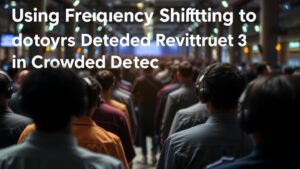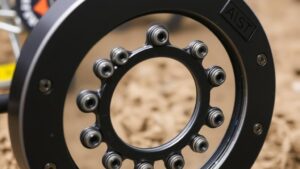Detecting in Abandoned Industrial Sites: Adjustments for Urban Interference
Detecting in Abandoned Industrial Sites: Adjustments for Urban Interference
Abandoned industrial sites, often termed brownfields, pose unique challenges and opportunities for environmental restoration and urban development. As urban landscapes evolve, the need to detect and assess these sites becomes crucial, particularly in light of urban interference, which can skew data and complicate detection efforts. This article explores effective detection methods while addressing the adjustments necessary to mitigate urban interference.
Understanding Urban Interference
Urban interference refers to the various factors in a city environment that can hinder or complicate detection efforts at abandoned industrial sites. This can include noise pollution, electromagnetic interference from surrounding infrastructure, and the presence of other contaminants. For example, the electromagnetic emissions from nearby electrical grids can distort geophysical surveys used in site assessments.
Concrete, steel structures and utility lines typically found in urban areas can pose significant barriers to traditional detection methods. As a result, understanding and adjusting for these variables is essential for effective site evaluation.
Detection Techniques
Several established techniques are employed to locate and characterize contaminants in abandoned industrial sites. Each requires careful consideration of urban interference.
- Geophysical Methods: Techniques such as ground-penetrating radar (GPR) and electromagnetic surveys are beneficial in mapping subsurface structures. But, urban interference from existing infrastructures can often lead to false positives or misinterpretations of data.
- Hydrogeological Assessments: Assessing groundwater contamination is vital in abandoned industrial sites. Urban development may alter groundwater flow, necessitating the adjustment of models to accommodate infrastructural changes.
- Soil Sampling and Analysis: While soil sampling remains a staple method for detecting contaminants, the results can be impacted by nearby construction activities and urban runoff. Tailored sampling approaches consider how these factors could influence findings.
Case Studies: Success Stories and Learning Experiences
Examining successful remediation projects can highlight the effectiveness of adjustments made for urban interference. One notable example is the remediation of the South Baltimore Peninsula, where urban interference from nearby rail lines and industrial remnants necessitated the use of advanced geophysical techniques to accurately assess contamination. Using GPR in conjunction with soil vapor surveys allowed for comprehensive mapping, reducing uncertainty in contamination assessments.
Another example is the successful redevelopment of the McKinley Park site in Chicago. In this instance, urban interference from surrounding residential areas influenced the soil and groundwater sampling strategy. Through the implementation of targeted sampling and the utilization of real-time data analysis, the project achieved effective remediation and community reintegration.
Adjustments and Best Practices
To mitigate urban interference during detection processes, several best practices can be implemented:
- Comprehensive Site Assessments: Conducting detailed pre-assessments can identify potential interferences, allowing for better planning of detection methods.
- Employment of Multi-Method Approaches: Using a combination of detection methods can provide a more robust assessment and cross-verify findings.
- Involvement of Local Stakeholders: Engaging with local communities and authorities can reveal historical site usage and other relevant data, thus enhancing the accuracy of detection efforts.
Real-World Applications and Future Directions
The techniques and adjustments outlined within this article are increasingly relevant as cities continue to grow and change. Urban interference not only complicates detection but also influences legislation and funding for site redevelopment. As such, ongoing research and development are necessary to innovate detection technologies and methodologies.
Emerging technologies, such as drones equipped with LiDAR and advanced sensor arrays, show great promise in urban environments. These technologies can reduce the impact of urban interference by providing new perspectives and data sources. Plus, the integration of artificial intelligence for data analysis could enhance the accuracy of findings, allowing for real-time adjustments during detection efforts.
Conclusion
Detecting contaminants in abandoned industrial sites necessitates a comprehensive understanding of urban interference and its implications on various methodologies. By adjusting approaches and employing multifaceted detection strategies, accurate assessments can be achieved, paving the way for successful remediation and reintegration of these valuable urban spaces. Key takeaway points include the importance of pre-assessment, stakeholder engagement, and leveraging innovative technologies to mitigate urban challenges effectively.



